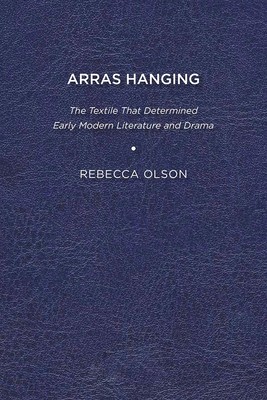
- We will send in 10–14 business days.
- Author: Rebecca Olson
- Publisher: University of Delaware Press
- ISBN-10: 1644530678
- ISBN-13: 9781644530672
- Format: 15.2 x 22.9 x 1 cm, minkšti viršeliai
- Language: English
- SAVE -10% with code: EXTRA
Reviews
Description
Textiles have long provided metaphors for storytelling: a compelling novel "weaves a tapestry" and we enjoy hearing someone "spin" a tale. To what extent, however, should we take these metaphors seriously? Arras Hanging: The Textile That Determined Early Modern Literature and Drama reveals that in the early modern period, when cloth-making was ubiquitous and high-quality tapestries called arras hangings were the most valuable objects in England, such metaphors were literal. The arras in particular provided a narrative model for writers such as Edmund Spenser and William Shakespeare, who exploited their audience's familiarity with weaving to engage them in highly idiosyncratic and "hands on" ways. Specifically, undescribed or "blank" tapestries in the period's fiction presented audiences with opportunities to "see" whatever they desired, and thus weave themselves into the story. Far more than background objects, literary and dramatic arras hangings have much to teach us about the intersections between texts and textiles at the dawn of print, and, more broadly, about the status of visual art in post-Reformation England.
Published by University of Delaware Press. Distributed worldwide by Rutgers University Press.EXTRA 10 % discount with code: EXTRA
The promotion ends in 23d.11:33:34
The discount code is valid when purchasing from 10 €. Discounts do not stack.
- Author: Rebecca Olson
- Publisher: University of Delaware Press
- ISBN-10: 1644530678
- ISBN-13: 9781644530672
- Format: 15.2 x 22.9 x 1 cm, minkšti viršeliai
- Language: English English
Textiles have long provided metaphors for storytelling: a compelling novel "weaves a tapestry" and we enjoy hearing someone "spin" a tale. To what extent, however, should we take these metaphors seriously? Arras Hanging: The Textile That Determined Early Modern Literature and Drama reveals that in the early modern period, when cloth-making was ubiquitous and high-quality tapestries called arras hangings were the most valuable objects in England, such metaphors were literal. The arras in particular provided a narrative model for writers such as Edmund Spenser and William Shakespeare, who exploited their audience's familiarity with weaving to engage them in highly idiosyncratic and "hands on" ways. Specifically, undescribed or "blank" tapestries in the period's fiction presented audiences with opportunities to "see" whatever they desired, and thus weave themselves into the story. Far more than background objects, literary and dramatic arras hangings have much to teach us about the intersections between texts and textiles at the dawn of print, and, more broadly, about the status of visual art in post-Reformation England.
Published by University of Delaware Press. Distributed worldwide by Rutgers University Press.

Reviews